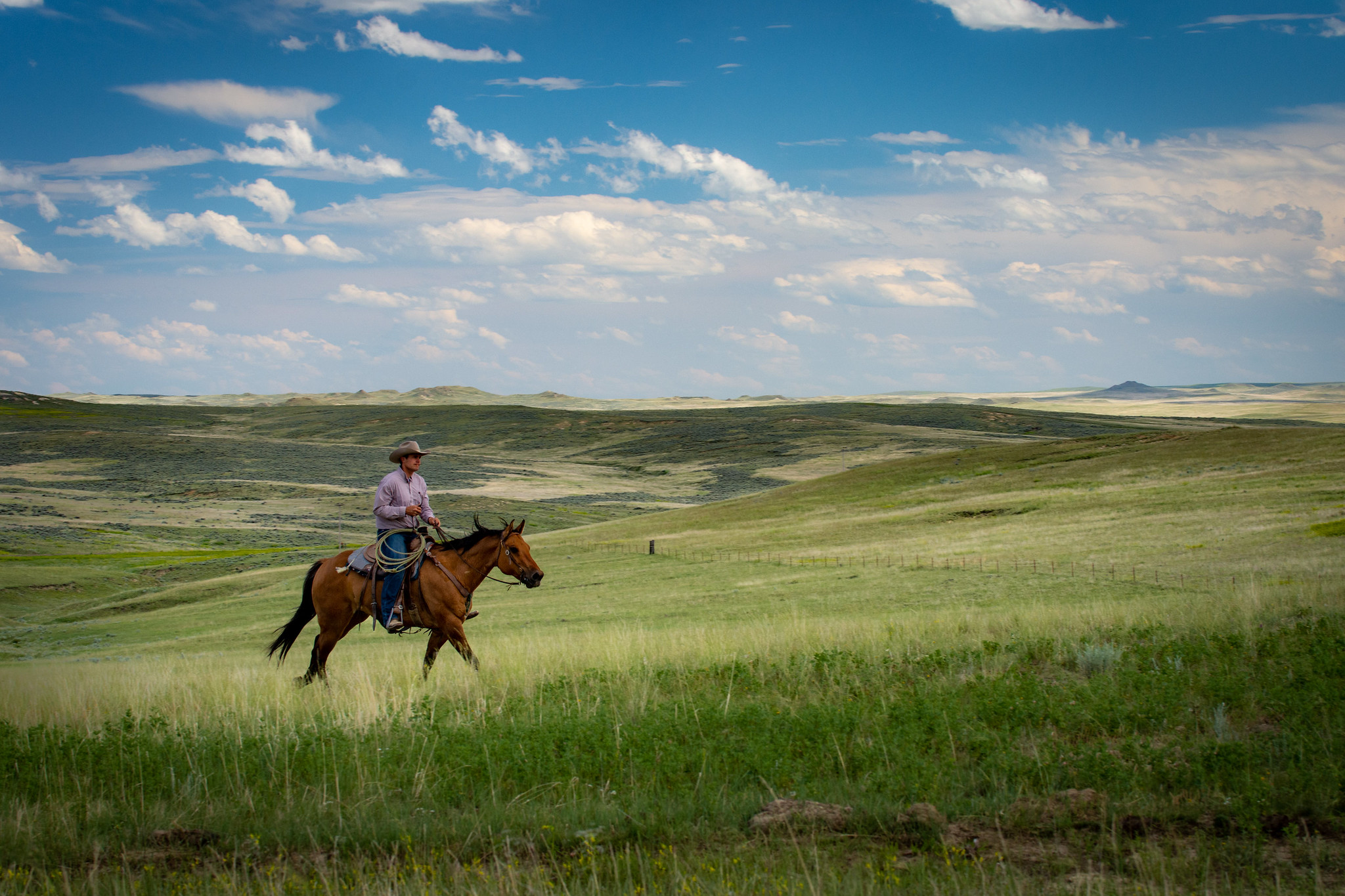Grazing Lands
 The impacts of climate change on grazing lands and the livestock operations that depend on them will vary by region, type of grazing land, vegetation community, and the type of livestock. These impacts are superimposed upon other factors such as land ownership, historical and current management, demographic changes and access to USDA programs.
The impacts of climate change on grazing lands and the livestock operations that depend on them will vary by region, type of grazing land, vegetation community, and the type of livestock. These impacts are superimposed upon other factors such as land ownership, historical and current management, demographic changes and access to USDA programs.
Rangelands cover an area of 405.8 million acres or 21% of the U.S. surface area. In the Western states, rangelands are predominantly Federally-owned lands, whereas over the Great Plains, rangelands are privately-owned. Pasturelands are also privately owned and cover 121.1 million acres (6% of the U.S. surface area); pasturelands are more common in the wetter half of the US, to the east of the 97th meridian. Rangelands and pasturelands are both used for grazing but the difference between the two is that rangelands support natural (and usually native) ecosystems while pasturelands are highly managed, cultivated systems.
Continue to the full text Grazing Lands in a Changing Climate or browse related content:
-
Dust Mitigation Handbook
Dust emission from cropland and rangeland is problematic in many areas, particularly where dry conditions and high wind…
-
Midwest U.S. Climate Resiliency Toolkit
Increasing humidity and precipitation and rising extreme temperatures are having negative impacts across the Midwest.…
-
Synthesis of Grazing and Water Management Strategies in the Great Basin
To address water limitations, ranchers have developed innovative grazing and water management strategies.
-
myRAINge Log: Precipitation Tracking Tool for Range Management
MyRAINge Log, a web-based data management and visualization tool designed specifically for cumulative precipitation…
-
Grass-Cast: A New, Experimental Grassland Productivity Forecast Expanding to the Southwest Region
Grass-Cast is now expanding to the Southwest region and will soon be available to producers in New Mexico and Arizona.
-
R&G Miller and Sons Organic Dairy Farm, Wisconsin Case Study
R&G Miller & Sons Inc., an organic dairy in the Southern Wisconsin, wants to maintain their commitment to…
-
Shifts in Growing Degree Days, Plant Hardiness Zones and Heat Zones
Climate change is already having substantial effects on natural systems and the benefits they provide. Forest…
-
Tribal Climate Adaptation Menu
The Menu is an extensive collection of climate change adaptation actions for natural resource management with tribal…
-
Vermont Farmer Profiles
Capstone students are helping us hear the stories of farmers who are adapting to climate change.









